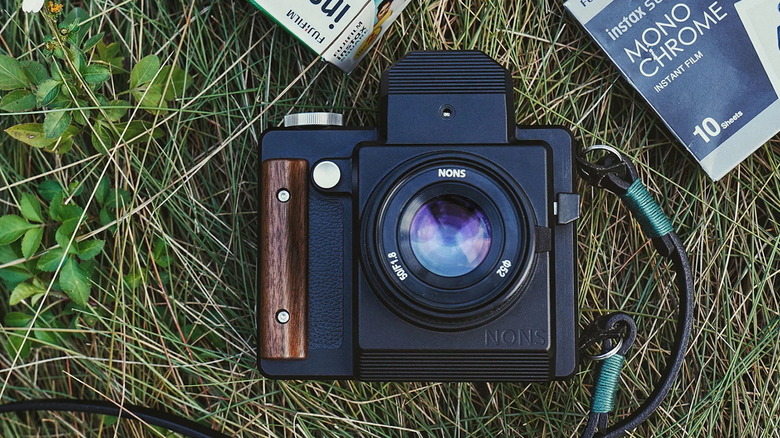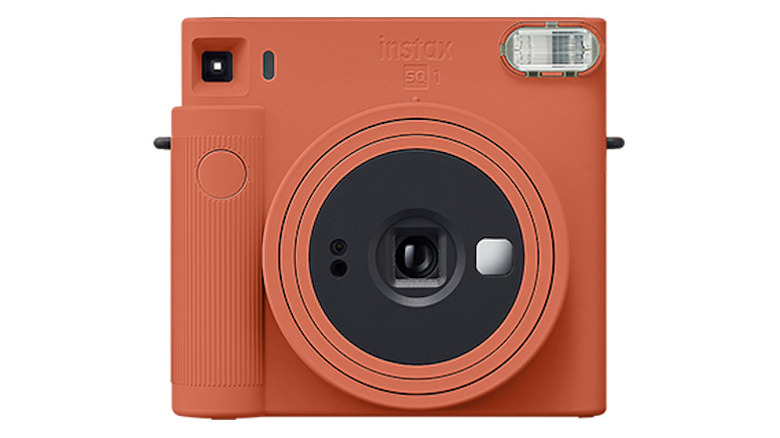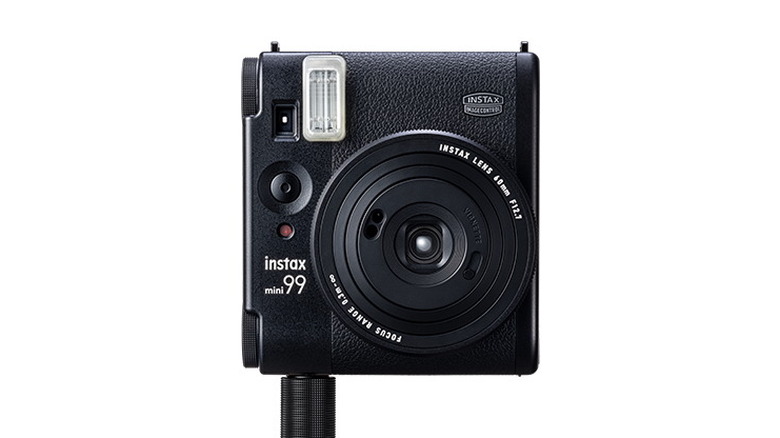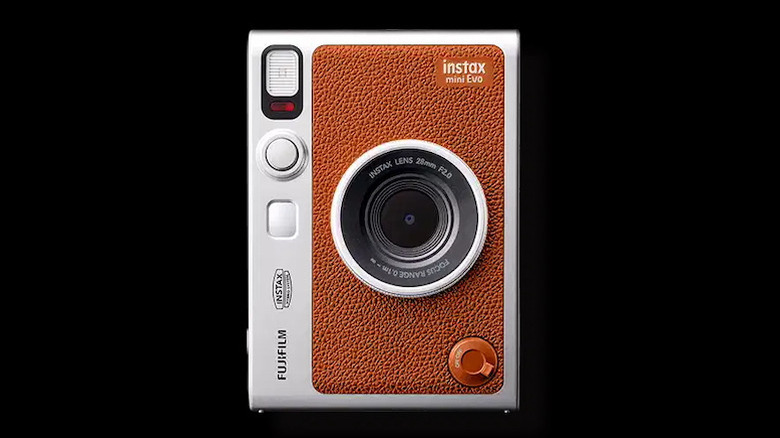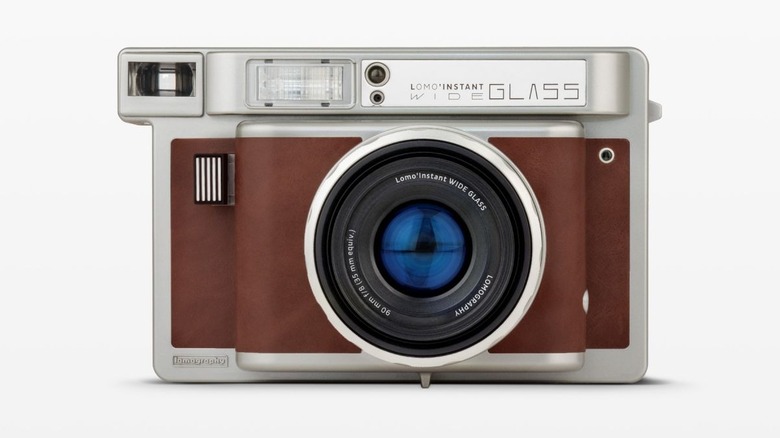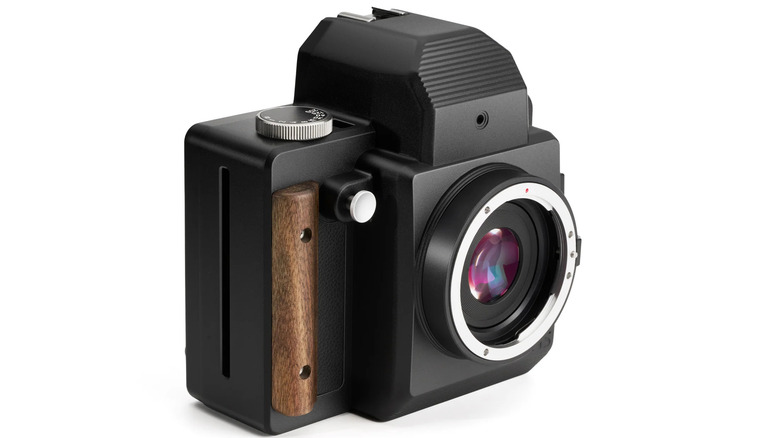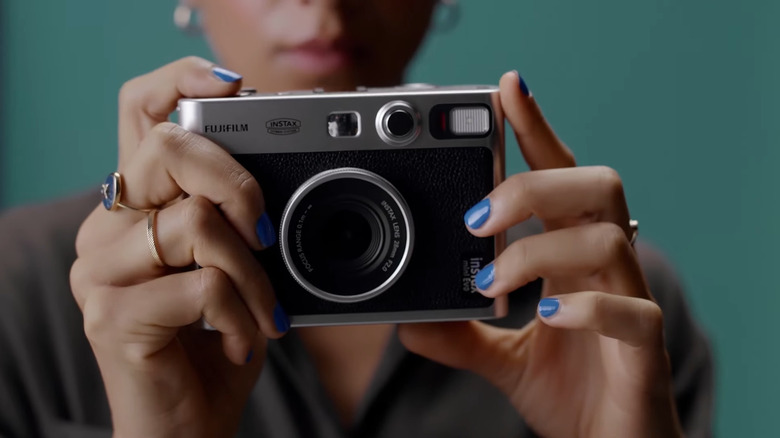6 Of The Best Polaroid Instant Camera Alternatives In 2025
We may receive a commission on purchases made from links.
Despite us living in a world that is constantly forcing us to live a digital life more and more, there is a feeling that cannot be replicated when it comes to holding an actual photograph in your hand. Even though Instagram may dominate most people's regular photography, there is still a market out there for people who want to shoot on film, as evidenced by the filters you see on Instagram trying to replicate it. In particular, people love instant film photography. Shooting a roll of film and getting it developed or developing it yourself can take a lot of time. But with these instant film cameras, they print out your picture just seconds after you have taken it, allowing you to fully take in the moment.
For a lot of people, these cameras have become synonymous with the company Polaroid. People call those little photographs that get printed Polaroids, just as people call tissues Kleenex. However, there are plenty of other companies making quality instant film cameras out there, and for some reviewers, these cameras actually outpace what Polaroid produces in terms of features and performance.
If you are someone who wants to start creating your own instant analog photos, we are going to recommend six different cameras from companies other than Polaroid that are excellent options. These will cover a variety of photo sizes, as well as features ranging from digital hybridization to interchangeable lenses. All of these cameras were selected based on the opinions of reviewers and photographers from a variety of sources.
Fujifilm Instax Square SQ1
When people think of instant film photography an especially Polaroid, they have the image in their head of that perfect square picture that gets printed out. However, not every instant film camera produces that style of image. Because it is the most iconic, though, we are going to start with a camera that does produce that image style. You need look no further for the perfect Polaroid alternative that with the Fujifilm Instax Square SQ1. This is the closest camera that Fujifilm has to the Polaroid Now, and it is one of the easiest instant film cameras out there to operate.
The SQ1 allows you to shoot in two different modes: standard and selfie. All you have to do to switch between these modes is twist the rim around the lens one way or the other, which is also how you control whether the camera is on or not. The selfie mode activates a tiny mirror next to the camera lens, allowing you to see your frame without a viewfinder. Aside from that, everything else about the picture settings like exposure and aperture are automated. The one significant flaw is that the automatic flash cannot be turned off. While it does provide many photos with some terrific soft light, it can be a slight drawback if you want photos without that flash, particularly when in selfie mode.
This camera comes highly rated from the likes of Casual Photophile, Digital Photography Review, Pop Photo, and The Verge. The SQ1 also comes in three different colors and is priced at $120.
Fujifilm Instax Mini 99
The Fujifilm SQ1 produces an image size of 62 by 62 millimeters — or about 2.4 inches squared — but the company also makes cameras that do not deliver that iconic perfect square that we are so used to. If you want an image shape that is more like a portrait or a landscape, depending on which way you hold the camera, you should look at the Fujifilm Instax Mini 99. The image size here is smaller overall, as it shares the same 62-millimeter height as the SQ1 film, but it is only 46 millimeters across. The Mini in this camera's name is apt, but that doesn't mean that the images it can capture are any less beautiful.
In fact, the Mini 99 has far more settings that the user is able to control than the SQ1. You have the ability to alter the color temperature of the image with the turn of a dial, choosing between six different hues. You can alter the brightness of the image as well, instead of relying on one standard bulb flash intensity. There are also features that allow for vignetting and double exposure, and rather than a selfie mode, this has the more traditional self-timer that you would expect from an analog camera.
Even though it's smaller, you do see an increase in price for the Fujifilm Instax 99. Its full price is $200, but you can often find it more in the $180 range. Considering the extra features and praise from publications like Wired and The Phoblographer, that pricing feels more than fair.
Fujifilm Instax Mini Evo
Although people want the look and feel of something completely analog, not everybody wants to put up with a camera that is fully analog. People are used to having a digital screen to see their image rather than looking through a viewfinder. They like to preview how the color or lens effects affect their image before that click the shudder, rather than just seeing the aftermath. Well, there is a way to combine the best of both worlds, and you can do that with the last Fujifilm camera recommended on this list: the Fujifilm Instax Mini Evo.
This is what is known as a hybrid instant camera. That means this has all of those digital features that have mentioned before, but it still produces film instantly, just as any other instant film camera out there. The Mini Evo, as you may suspect by the name, utilizes the same film that you would buy for the Fujifilm Instax Mini 99, creating that 46 by 62-millimeter sized image. Currently, Fujifilm does not make a hybrid companion to the SQ1, so this is the only image size you are going to get.
The added bonus with this camera — and is a major benefit according to Casual Photophile — is that you also have the ability to connect this to the Mini Evo smartphone app. Through this, you can also print any image saved on your smartphone with the camera, so if you forget to bring your Mini Evo with you for an occasion, you can still easily get physical photos of it later. The Fujifilm Instax Mini Evo sells for about $200.
Lomography Lomo'Instant Wide Glass
Although Fujifilm offers a wide array of instant film cameras, there are other companies delivering excellent competition to the Polaroid giant as well. For many amateur and professional photographers, Lomography is a great company for a variety of film formats like 35-millimeter and 120-millimeter, but it also produces a surprisingly robust line of instant film cameras as well. The company also makes cameras that produce those standard square or mini-sized images, but an interesting one is the Lomography Lomo'Instant Wide Glass camera. This produces the largest image so far on this list, with a size of 99 millimeters across and 62 millimeters high.
The Wide Glass gets its name from the kind of lens it has. Many of these instant film cameras utilize plastic for their lenses, but the all-glass lens for this camera give its images a sharpness that plastic simply cannot mimic. Along with this sharpness, you get a camera that is far more manual than your standard instant film camera. It isn't entirely manual, but it does give you multiple options for important elements like focus and exposure. While the point-and-shoot nature of some of these cameras is fun and easy, being able to have firmer control over your images will let you create ever more indelible pictures.
Even though Lomography makes many different films, it doesn't produce instant film. The Lomo'Instant Wide Glass actually utilizes Instax wide film from Fujifilm, which explains that 62-millimeter image height. Fujifilm also makes a wide camera, but the Lomography one which goes for $279 is arguably the better option.
Kodak Mini Shot 3 Era
You cannot have a discussion about film without Kodak. This company stands head and shoulders above the rest when it comes to most kinds of photography, not to mention cinematography as well. However, they have less of a stranglehold on the instant film market. That doesn't mean that the company doesn't have its own cameras for your photographic pleasure, and one of the best is the Kodak Mini Shot 3 Era.
This is a camera that comes in two different styles — standard and retro — depending on what kind of color way you want, but the two perform the same functions. Even though this is called a Mini camera, its image size is anything but mini. Kodak's camera produces a square image that is 3 by 3 inch, which is quite a bit larger than the options using film from Fujifilm. However, even the most positive reviews of this camera do admit that this doesn't create the sharpest images you'll find on this list.
The benefits to the Mini Shot 3 is how it interacts with the corresponding app. Rather than just being used for functionality purposes like changing colors or exposure, the app instead acts more like a photo editor you would use for Instagram, allowing you to use borders, filters, stickers, and more to alter your photo before it prints. If you are willing to sacrifice a little bit of image quality for this fun customization, you can get your hands on a Kodak Mini Shot 3 for $140, which also comes with 68 sheets of film to shoot on.
Nons SL660
All of the cameras recommended thus far share something in common: each uses a single, fixed lens. While there are some adjustments in focal length that can be made on some, you are quite limited. For some, that isn't an issue, but for those who want to take their instant film photography to the next level, you should really check out the Nons SL660.
This is an instant film camera that has an EF lens mount on the front. A number of companies produce lenses to fit this mount, but the primary one is Canon. Since Canon is arguably the greatest producer of camera lenses on the market, you have a wide variety of lenses to choose from for your photos. Making things even more accessible, Nons also offers a series of adapters for different lens mounts ranging from Nikon's F mount to an M42 mount to Pentax's K and PK mounts.
In terms of operation, it is essentially an SLR camera that produces instant film photographs rather than using 35-millimeter or 120-millimeter film. The main body is also made mostly of aluminum instead of plastic, giving the user a more solid experience. As for the film that you would use, you need to go back to Fujifilm's Instax film, and the SL660 produces those perfect square images of 62 by 62 millimeters. This is by far the priciest option on this list at $479, which doesn't include a lens or any adapters, but if you want instant film photographs with a professional feel, the Noms SL660 is a terrific Polaroid alternative.
Methodology
There are many instant film camera alternatives to Polaroid out there, so narrowing this list to just six different models was able to be done thanks to several different factors. First, there are the opinions of reviewers and photographers from a variety of different sources, in order to get some semblance of a consensus amongst opinions. These course included Digital Camera World, The Verge, PC Mag, Casual Photophile, The Phoblographer, Wired, Tom's Guide, Pop Photo, and Dan Finnen.
Beyond these opinions, we wanted to give representation to instant film cameras that produce a variety of differently sized photographs, rather than just sticking to the traditional, perfectly square format. We also wanted to showcase a variety of the different features that these cameras are able to handle.
Lastly, there needed to be a fairly wide price range here because not everyone's budget to purchase a camera is the same. Once all of these factors were taken into consideration, these six instant film cameras were selected.
